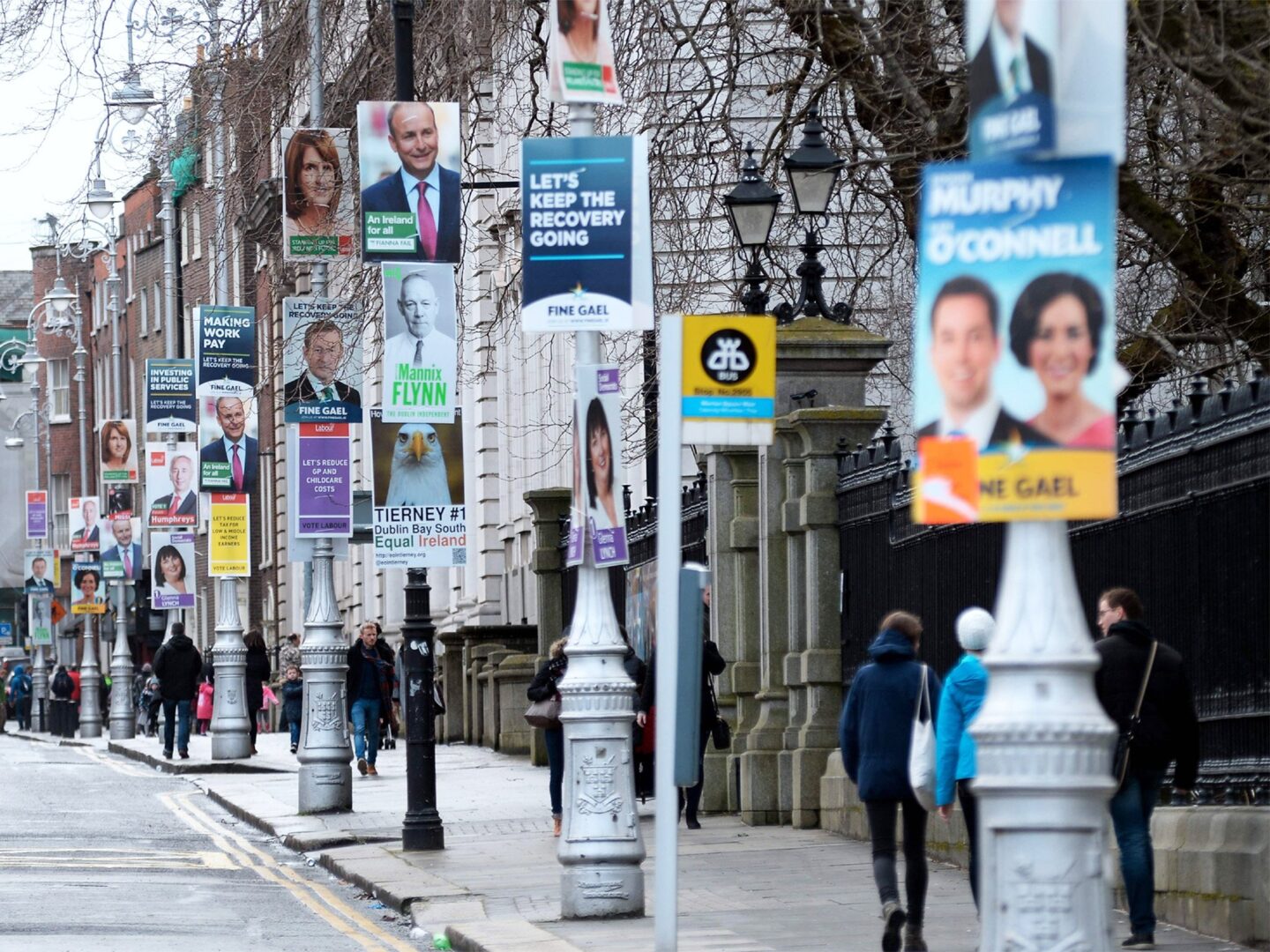As the local and European elections approach, one fact of Irish politics is the inevitable emergence of posters for political candidates. Postering is a very Irish phenomenon, with many other countries either restricting their use to designated areas or favouring other means of advertising their candidates. In recent years there have been more groups and local areas that have pushed against the idea of posters being used in their areas and across the country. This is mostly due to the litter that the posters leave behind, but also the simple cost and waste involved in the production of posters.
However, there is a major flaw in the current push to get campaigns and candidates to voluntarily abstain from the use of posters. Posters due to their widespread use have placed candidates in a prisoners dilemma of sorts. If any one candidate or group of candidates all agree to honour a voluntary abstention from postering, they place themselves at a significant disadvantage compared to any candidates that do avail of posters. Therefore candidates who do wish to avoid using posters must simply rely on the goodwill of other candidates, something that is lacking in the world of politics.
This also presents a significant issue for first-time candidates. Incumbency bias is a well-observed fact of politics and life. This means that people are more like to support the status quo than they are to support any change. The result, candidates that are already elected have a distinct advantage. This also means that anyone who is not currently holding office or has not held office before is at a distinct disadvantage. By removing the right for candidates to put up posters for elections, it also means that there is no ability to level the playing field.
Some groups have proposed reasonable compromises to this, such as the French system of designated areas for postering in the centre of each town or village. Others have opted to propose that all candidates be given equal time to communicate their positions via local radio as an alternative.
However, none of this can be done in a manner that is fair to all candidates without a legislative or regulatory solution. Therefore, well-intentioned as these efforts to address the waste posters create are, they must be tempered with a degree of realism as to not lock smaller parties or independent candidates out from a change of election. Perhaps the most reasonable voluntary option would seek no poster zones on a local area basis, as some Tidy Town committees already that all candidates agree to and that local Tidy Town groups enforce. This would restrict posters to outside these core areas while also still allowing their use.
In the long term, the balance between the need for candidates to promote themselves and the wants of local and national environmental groups must be considered. The worse case that could arise from banning posters is that we lock in a bias towards candidates that are already elected or have the money to spend on billboards or adverts in bus shelters. While candidates end up spending an inordinate amount on posters, they are on the whole cheaper and more accessible than many other forms of advertising on a per unit basis and typically form an important part of candidates election strategy.
Unless viable alternatives are identified in advance of any formal ban or restriction on postering, then the effort cannot be viewed as an environmental one, but rather an effort to restrict an effective campaigning tool that is more important to those candidates that do not have the brand recognition of larger parties than those that are from larger parties.
By Aaron Bowman – CoEditor

